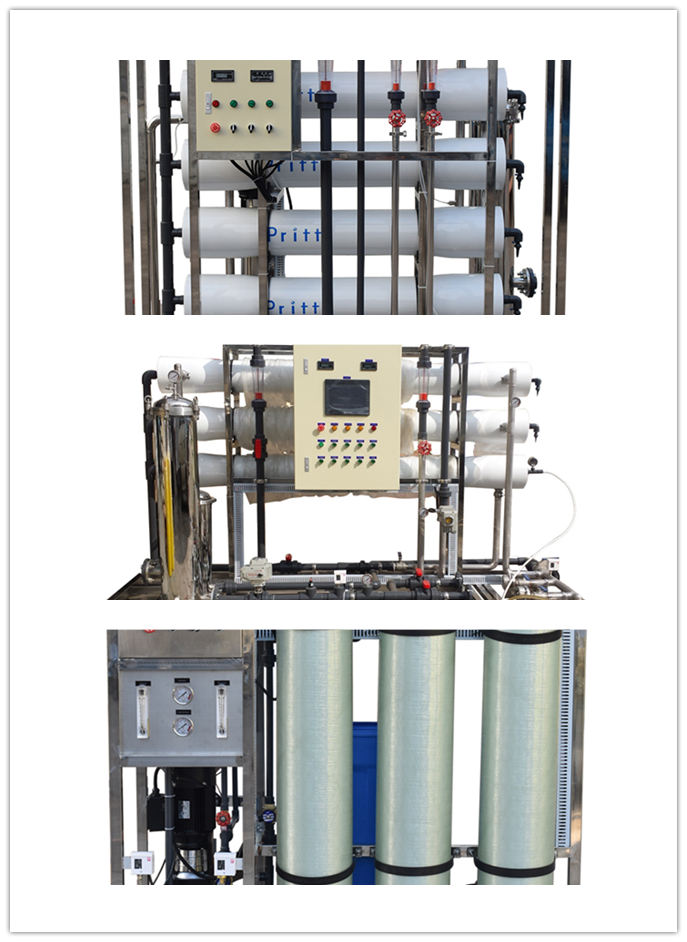Are your supplied with water that has impurities and unsafe for drinking? Does the cost of requesting water delivery service or bottled water becoming a heavy burden to you. Then you don’t have to worry anymore. The reverse osmosis water system is here to provide an outstanding water filtration solution for your home or business. Reverse osmosis filtration is a popular water purification method that passes the water with impurities across the semi-permeable membrane, isolating the contaminants and flushing them down the drain, and collecting purified drinking water into a holding tank.

Why choose a reverse osmosis system Below are some of the reasons why choosing reverse osmosis for your water filtration is a good idea.
Improves the taste of water
Reverse osmosis filtration helps to improve the appearance, taste, and odor of water. RO removes the contaminants and impurities that make water have bad taste and smell.
Easy to maintain
The reverse osmosis water system is simple to maintain. It has few replaceable and movable parts, hence making it simple to clean and service.
Saves you money
With an RO system in your home or business, you don’t have to order purified water from delivery services or purchase bottled water. RO filtration provides you with pure water that is better than the bottled water at a minimal cost. Therefore, it ends up saving you a lot of money.
Remove impurities
Reverse osmosis filtration eliminates pollutants and contaminants from water. Such impurities include nitrates, bacteria, pesticides, pharmaceuticals, fluoride, sulfates, arsenic, and others. Additionally, RO systems contain carbon filters which remove chlorine and chloramines, making water safe to drink.
How does reverse osmosis filtration work?
As stated earlier, reverse osmosis is a straightforward water filtration process. The system forces the tap water across the semipermeable membrane to remove contaminants from the water. In this process, organic solids such as salts are dissolved and later removed from the solution.
After the water passes through a semi-permeable membrane and other additional filters, the contaminants are isolated and flushed out through the drain. From there, clean and delicious water remains in the system.
What are the main components of the RO system? Reverse osmosis has basic components that ensure water filtered is safe and quality. They include.
Cold water line valve
This is a valve that fits on the supply water line. It has a tap that connects the inlet of the RO system with the cold water supply. In other words, it is the water source of the reverse osmosis system.
Pre-filters
After the water has been tapped from the cold supply line to the RO system, the water first passes through the pre-filters. The most popular pre-filters are carbon and sediment filters. These filters are meant to protect the reverse osmosis membrane by eliminating dirt, salt and other sediments that may cause system clogging.
RO membranes
Reverse osmosis membrane is the most vital component of the RO system. It is the heart of the RO system. The membrane is semi-permeable that removes all aesthetics and harmful contaminants. Once the water passes through the membrane, when is left is purified water and is forced to the storage tank.
Post filters
Once the water leaves the storage tank, it now passes through the post filters. These are the final filtration. Post filters are mostly the carbon filters which helps to remove bad taste and odors from water.
Storage tank
This is where the treated water is stored. The RO storage tank can hold 2-4 gallons of pure water. The tank has a bladder that helps to keeps the water pressurized when it is full. A typical storage tank is 15 inches tall and 12-inch diameter.
Automatic shut-off valve
Reverse osmosis contains an automatic shut off valve that helps to conserve water. When the storage tank is now full of treated water, the valves automatically close down to block further entry of water. Now, when you draw water from the storage take, it reduces the pressure in the tank and the shut-off valves open to sending more water into the tank.
Drain line
The drain line is located at the outlet side of the RO membrane. It is used to dispose and drain away the wastewater that contains contaminants and impurities isolated from the reverse osmosis membrane.
Check valve
Check valve helps to stop the backward flow of the purified water from the storage tank. It is found at the outlet of the RO membrane. It serves are very important function since the backward flow may cause the RO membrane to rapture.
Faucet
RO system faucet is installed at the kitchen sink. It helps to regulate the entry of water from the cold supply line to the reverse osmosis water system.
Flow restrictor
Flow restrictor helps to regulate water that is passing through the RO membrane. It helps to maintain the water flow rate to enhance proper filtration. The restrictor also helps to maintain pressure at the inlet of the reverse osmosis membrane to ensure the incoming water does not just choose the path with least resistance and get drained away.
Reverse osmosis system incorporates four main stages that assure good water quality. The technology has been in existence for a few decades now, but now it’s becoming more reliable, cost effective and easy to maintain. The four RO process includes the following
Sediment filters
This is the initial step of water filtering. These pre-filters eliminated sediment, dirt, and salt to prevent them from getting into the delicate membranes which can be easily damaged.
Carbon filters
Carbon filters remove chlorine and other impurities that may damage the membrane as well as improve the odor and taste of water.
RO membrane
RO membranes are the heart of the RO system. It allows water to flow through and filters all other additional impurities.
Polishing filters
This is the final filtration process. The stage polishes up the water and treats any remaining taste and odor. These stages ensure that the water is quality and fine for drinking.
Bottom line
You don’t have to buy bottled water anymore. All you need is to buy a reverse osmosis water system. It is beneficial, cost effective and easy to install and maintain.

